Race to the Middle: Lenny Henry’s True Identity

As there’s a million humorous commentators doing the bad movie thing, other than Carry On Emmanuelle, I usually stick to stinky television. But this one is close enough to the wheelhouse to dig into, despite not actually being notably bad, although its premise distinctly falls under the category ‘things that would never be allowed today’. You could be forgiven for not knowing 1991’s True Identity exists, a rarely-if-ever spoken of oddity so tucked away in its star’s CV, if he keeled over tomorrow, in a hundred obituaries, you’d not see its title spoken once.
These days, whenever Sir Lenny Henry’s trending on Twitter — virtually a weekly occurrence — clicking on said trend entirely leads to tweets letting everyone know they never found him funny, and accusing him of stealing a living (on top of ‘stealing’ Comic Relief money by funnelling it to African causes, plus being a massive racist against white people). Funnily, the lists from these men with flags and football teams in their bios, of “so-called” comedians that should see the licence fee cancelled extends from Lenny to Nish Kumar, Romesh Ranganathan, and for a bit of variety, Rosie Jones.
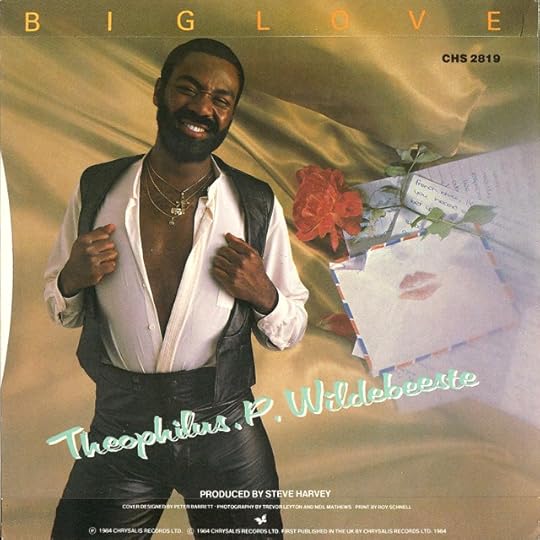
Regardless the opinions of blokes who own the Sinderella box set, nobody can deny Lenny was one of our biggest comedy stars for years. I’ve a vivid memory of a group of us boys gathered round the corner of the playground in a hush, furtively looking at a picture in a mate’s Comic Relief book where Theophilus P. Wildebeeste lay in bed with what appeared to be a foot-long erection poking through the sheets, which the next page revealed was actually a bottle of champagne. When Hollywood inevitably came calling, Lenny signed a three-picture deal with Disney, the first of which was 1991’s True Identity.
That crop of Brit comics had starred in films before, albeit British-made or in smaller, quirky roles; Smith and Jones’s Morons From Outer Space, Mel solo in The Princess Bride, Pamela Stephenson in Superman III, Rowan in The Tall Guy — though I’m sure there are plenty of others readers will pick me up on. But Lenny was the first to front a big Hollywood movie for a major studio, made with American money and set in New York. He wasn’t a complete unknown in the US, with The Lenny Henry Show airing on Bravo, but essentially this was the classic attempt to break America.
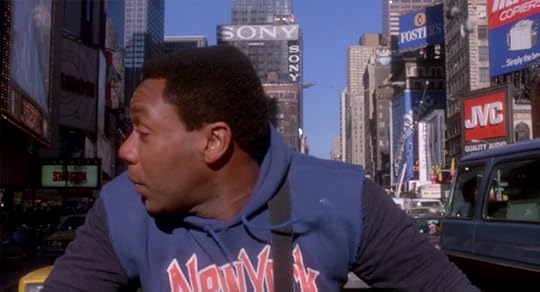
Its opening scene has the always brilliant J.T. Walsh (part of a great cast which includes Michael McKean as Lenny’s agent and Austin Pendleton as a theatre director) leading an FBI SWAT Team in the arrest of mob boss Frank Luchino on his yacht, which promptly explodes, killing Luchino, and leaving Walsh distraught as his big fish escapes justice. Cut to five years later, Lenny Henry’s Miles Pope is in an acting class, doing a deliberately awful American accept in a scene where he’s playing a pimp… oh no, that’s the accent he’s using for the whole film. Told by teacher he’s “not black enough,” he cranks it up to ten, grabbing at his genitals, which the teacher loves; a white man’s idea of how black people should behave, while Miles bemoans the fact every role for black performers is a criminal.
It’s funny to think there was a time ‘Lenny Henry cycling through Times Square’ was a scene in a film and not a title of the latest BBC celebrity travelogue, as Miles stops to wistfully gaze at a poster for Othello, ‘presented by Leland Carver Enterprises’, imagining himself in the role, getting roses lobbed at him. NYC itself looks grimily gorgeous and full of life, the way it used to in movies before they just filmed a tiny bit when nobody was around and filled in the backgrounds using computers. His neighbour is best buddy Duane, a glasses-wearing nerd a full foot shorter than Lenny, and played by True Identity‘s director, Charles Lane. It’s a role he gave himself solely to prevent being fired during the shoot, and his hiring made Disney the last major studio to employ a black director. With the glasses, teeth and mannerisms, Duane’s got a huge David Leibe Hart vibe, and there’s a running gag where he likes bigger women (by 1991 standards, when it was illegal to have a bottom) which is played like a perverse fetish. Duane’s apartment is filled with prosthetic heads, because — as will come into play — he’s a special effects artist.
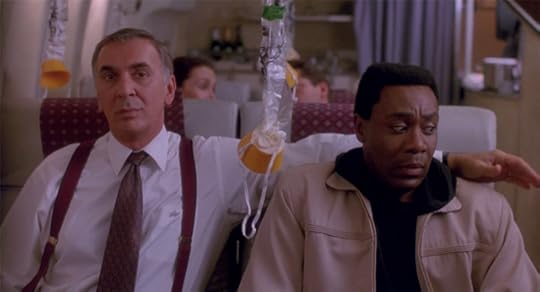
Flying back from playing a raisin in a cereal commercial and fast-talking his way into first class, Beverly Hills Cop style, Miles finds himself sat next to the Leland Carver (Frank Langella), trying (and failing) to wangle an audition for Othello. Waking to find oxygen masks hanging and the other passengers screaming, death is imminent, but Leland, cool as a cucumber, tells him to “shut the fuck up and stop snivelling… die like a man!” and then casually confesses that Frankie Luchino didn’t blow up on a boat; he faked his death and got plastic surgery, taking on the assumed name of Leland Carver. “Well, I’ll see ya in Hell, kid,” he says, right before the pilot gets the plane back under control. This ‘whoops, the plane hasn’t crashed’ confession was later done in Almost Famous and Father Ted, and subverted in the Seinfeld finale, though nothing will top Jimmy Olsen in the 90’s Lois and Clark, tied to a doomsday device with Lois, believing they’re both about to die, and deciding the last thing she should hear is his admission of her starring role in his wet dreams.
Anyway, now Miles knows Leland’s True Identity, he has to be whacked, and with a goon giving chase at the airport, escapes in a taxi, straight to a cop shop where he’s pulled into an identify parade and identified as a flasher. After getting shot at by Leland’s hitman, Miles begs Duane for help making him disappear, which he does using the gimmick of several reality TV experiment shows from the early noughties; race-altering prosthetic make-up. However, there are sadly no scenes of Mike Reid being transformed into a Rastafarian — “you’re a Wilf, mon!”
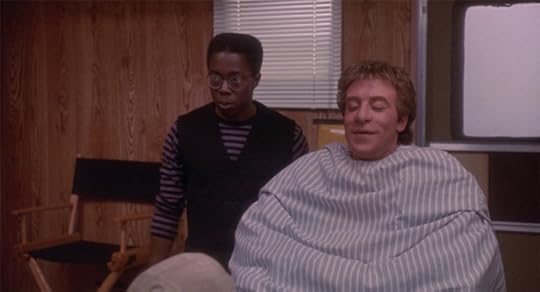
The old race switch story wasn’t new, most notably with Melvin van Peebles’ 1970 film Watermelon Man, where a black actor in whiteface turned black, and there’s a nod to it here with a cameo by Melvin as a cabbie bemoaning “Uncle Toms… their Brooks Brothers suits and all that chemical in their hair,” while Miles literally turns himself Caucasian in the back seat. More infamously, and contemporaneously to True Identity is 1986’s Soul Man, with another white-to-black plot, donning the shoe polish to win an African Americans-only scholarship, but at this point, it’s a dead genre, signing off for good with White Chicks, where the Wayans Brothers got done up in prosthetics not-dissimilar to Lenny’s, to jump onboard the Paris Hilton impressions bandwagon.
Though the viewer’s well aware Lenny Henry spent hours getting it put on every morning before shooting after sitting in one of those molds with straws up his nose, Miles’ disguise is the sort of magic make-up he can take casually apply himself while in the back of a cab, consisting of just a wig, rubber nose and single tiny jar of Caucasian paint. The paint stays perfect even when he’s being punched in the face, and though it covers his hands, doesn’t come off when he touches things. I know it’s a bit Angry YouTube Movie Reviewer to pick apart silly specifics of what’s ‘just a movie’, but it is otherwise grounded, and this isn’t Mission Impossible. As movie make-up, it’s unsettling in that you know it’s somehow not a real face, but still tons better than Gordon Ramsay’s nightmare disguises.
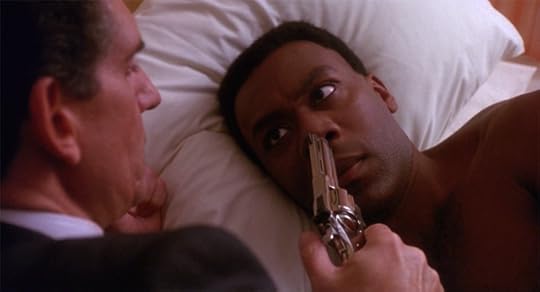
The race-switch premise always makes one take a sharp intake of breath, as it can only ever lead to the embracing of stereotypes. You have to behave like a black man… so how do black men behave? What makes a black person’s walk different from a white person’s? Once Miles whited up, I was expecting a feature-length cover of that Simpsons scene with the stand-up comic — “black people drive like this [drives in a cool way], white people drive like this! [drives in a nerdy way]” But the racial conceit; the whole “you couldn’t do this now, cos of woke!” is barely used, barring when Miles first becomes white and chats to another black man in the street about how us whiteys walk with our butts all tight, and realising it’s easier to hail a cab.
Instead, it’s another “mistaken for a criminal” flick, after the hitman catches him in his apartment, collecting clothes. Noticing Miles’ bare feet are brown, a scuffle ensues where a waterbed gets shot, and the hitman’s fatally electrocuted when a boombox falls on it. From here, it’s your common mistaken identity farce, like something Lionel Blair would be losing his trousers in at the end of Worthing pier, having to pretend he’s the hitman when Leland’s main goon, Anthony, catches him with the corpse (played off as an unlucky witness). Consequently, rather than “how would a white person act in this situation?” it’s all “what would a mob guy say?” and he gives White Miles a Mafioso Sopranos voice after Leland demands a meeting, putting them face to face a mere 40 mins in. Having taken the hitman’s name, White Miles is told to get Black Miles killed, sharpish.
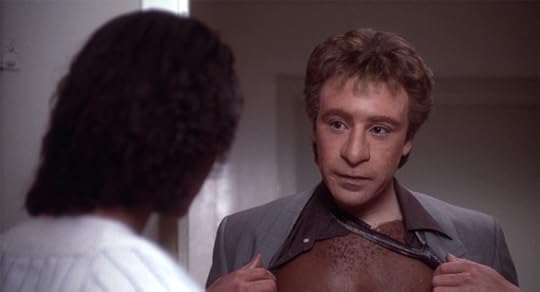
It should also be noted, this is the era when movies had to have a subplot about normal people accidentally crossing drug dealers or the mob — Three Men and a Baby, Crocodile Dundee, Twins — everyone evading criminals and ducking bullets. In the standard romantic plot, just like every film older than a decade, Miles comes across like a creep and a stalker. He first spots Kristi — Leland’s interior designer, a role Lane changed from a maid in the original script — during their initial meeting, and eventually tries to enlist her help in getting evidence for the feds, turning up at her apartment in a Prince-like disguise as ‘James Brown’s brother’. She believes him to be mentally ill, telling him “you’re cute, but call me when you’re better,” and when he knocks again later as White Miles, unbuttoning his shirt to show off a brown chest, as proof that he is not mentally ill, she’s all aboard.
Miles and now-girlfriend Kristi get J.T. Walsh on side, coincidentally right as Miles finally lands the leading role in Leland’s Othello — or at least, understudy, to James Earl Jones. But how, ponders Leland, to flush him out before he testifies for the grand duty? Hard cut to James Earl Jones in a hospital bed with two broken legs and a broken arm after a hit and run. Walsh’s FBI boss R. Lee Ermey tells him they won’t authorise the mission to take down Leland, to which another FBI guy makes this face:
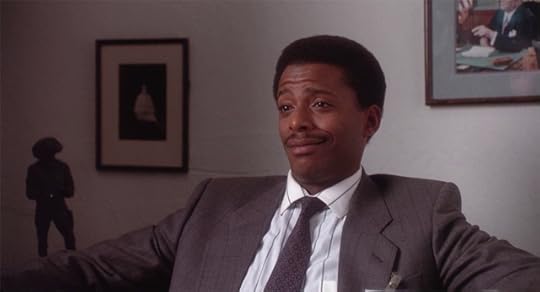
But authorise they do, at the opening night of Othello where our whole cast are in attendance; Leland watching angrily, Michael McKean snoring, hitman with a silencer sneaking about in the rafters above the stage. I wonder if Lenny’s actual debut in Othello was slightly ruined by him remembering “I did this exact scene in that movie which killed my Hollywood career”? During a big speech, Miles seemingly gets shot, but it’s just another of Duane’s special effects, and as he staggers into the audience, still monologuing, ‘dies’ in Leland’s lap, before Walsh comes out and arrests him, and the movie ends with Miles and Kristi off on a dirty vacation together.
If you’re wondering what the other movies are from his three-picture deal, True Identity did so poorly, Disney immediately cancelled Lenny’s contract. Though the film is undoubtedly a failure, there are a handful of genuinely funny moments. Andreas Katsulas as Anthony the Goon steals every scene he’s in, particularly when jumping up and down on a corpse to get it flat enough to close a trunk, while Miles’ funniest bit comes during the plane crash, staggering to the ‘cockpit’ and pulling it open to find only a rack of clothes. “There ain’t no pilot in here, this is just a closet! A fur coat can’t fly a plane!” But these are rare, and they even do a bit I thought I’d jokingly suggest after the ‘brown feet’ scene, like the rascal I am, where White Miles is stood at a urinal and an old man does a double-take, staring down at the black penis, before turning to spray piss everywhere (just audibly; the piss and dicks are below frame).
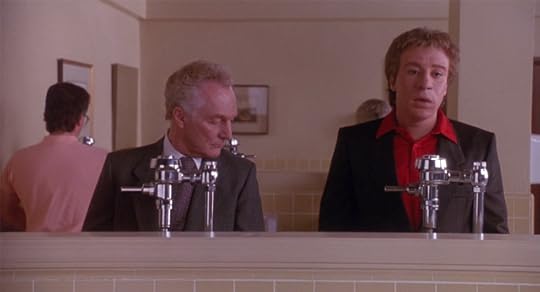
It probably sounds like I’ve been describing a family movie, but even given its sitcom-like tone, True Identity is deservedly R-rated, absolutely riddled with f-bombs and the odd grisly scene, like Duane’s faking of Miles’ death, scattering the apartment with bloody, severed limbs, and the seemingly-decapitated head of Lenny Henry, tongue lolled, poking through the sofa cushion, which a goon declares “fuckin’ beautiful,” before running outside to vomit. Despite how it makes 2024 eyes light up, the most offensive thing about the premise is that they don’t really use it. You’ve got a black director, and a performer well aware of the complexity around black performers who’ve either had to ‘act black’ or assimilate ‘as white’ to survive — with a famous early stint in The Black and White Minstrel Show. Plus, a script which grew out of a sketch the writer penned for Eddie Murphy on SNL, where Murphy whited up to experience life from the other side of the racial divide. All the ingredients of a toothsome satire, yet they choose to sidestep that path entirely.
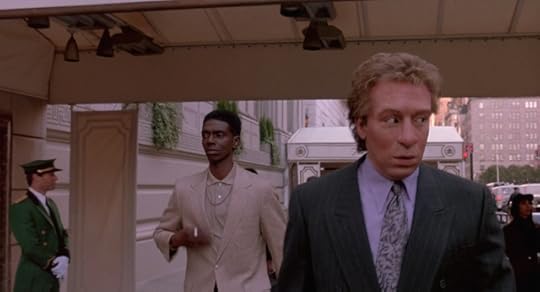
There’s nothing of how the world sees Miles differently depending on whether he’s brown or pink, or the various privileges or disadvantages at play, other than a brief scene of White Miles sharing a cab with a lady who thinks she recognises him from a financial firm, in a sort of American Psycho ‘all white Wall Street jerks are interchangeable’ moment. What we’re left with is an anaemic Some Like It Hot. Aside from Leland’s one-time use of a slur, the most racially charged scene has White Miles nervously hurrying past an alleyway of black and Latino ruffians, threatening him with Beano-level dialogue: “you’ll get hurt round here, white boy!” and “round here, our favourite people definitely ain’t white!” In skirting the obvious angle, True Identity misses opportunities to be both better and much, much worse, landing in this tedious middle area, and if not for everyone saying fuck all the time, this would’ve been quite at home alongside Big and Flight of the Navigator as naff Bank Holiday afternoon fare on BBC1.
…
This piece first appeared on my Patreon, where subscribers could read it a month before it landed here. If you’d like to support me for as little as £1 a month, then click here to help provide the world with regular deep dives about weird-bad pop culture, early access to my videos, my podcast, and all kinds of other stuff.
There’s a ton of content, including exclusives that’ll never appear here on the free blog, such as 1970’s British variety-set horror novella, Jangle, and my latest novel, Men of the Loch. Please give my existing books a look too, or if you’re so inclined, sling me a Ko-fi or some PayPal cash.



